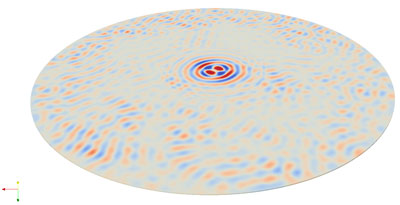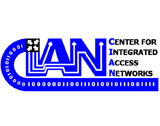 CUDA Spotlight: GPU-Accelerated Electromagnetic and Micromagnetic Simulators Return to CUDA Spotlight Archive This week’s spotlight is on Vitaliy Lomakin, an Associate Professor at the University of California, San Diego (UCSD). Prof. Lomakin works in the field of Computational Electromagnetics and Micromagnetics. This technology is fundamental in the design of components in products like solar cells, antennas and hard drives. In addition, it is utilized in R&D related to human health, from MRI systems to treatments for cancer. NVIDIA: Vitaliy, please tell us about what you and your team are working on. Electromagnetic simulators are used in the areas of optical systems (solar cells, lasers, waveguides, fibers, sensors, optical imaging systems, etc.) and microwave components (antennas, radars, communication systems, microwave imaging systems, etc.). Micromagnetic simulators are critical in the research and development of magnetic resonance imaging systems, magnetic hyperthermia systems, magnetic recording systems, spintronics, and magnetic memories, to name a few. As an example, our simulators have enabled - for the first time ever - the modeling of the highly complex problem of a complete magnetic recording head used in hard drives, which needs to be discretized over hundreds of millions of elements.
NVIDIA: When did you start using GPUs? How does GPU computing impact your work? Our simulators are implemented on GPU-based systems using the CUDA parallel programming model. As a result, they are very efficient in terms of speedups (70-400X, as compared to CPUs) and absolute performance. For example, we developed a micromagnetic solver, referred to as FastMag. On a simple desktop, FastMag can rapidly solve complex problems discretized over hundreds of millions tetrahedral elements. This is enabled by GPU computing. The advantages of working with CUDA include the ability to handle very large problem sizes; very fast performance; easily obtainable computers; no need for specialized facilities for computers; and low power consumption. It offers a truly high-performance cluster at a cost of a desktop. NVIDIA: What sparked your interest in electromagnetics?
NVIDIA: As computing becomes more powerful, what will we be able to do in the future? NVIDIA: Is there anything else you would like to tell us? Additionally, my group is involved in several computational projects, including the Center for Magnetic Recording Research (CMRR) at UCSD and the NSF ERC Center for Integrated Access Networks (CIAN).
With CMRR, a world-renowned center in the field of magnetic recording, we work with hard drive companies to advance ultra-high density magnetic recording. With CIAN, a research leader in future optical systems, we develop computational electromagnetics tools in the framework of the Optical SPICE project to enable microsystems on a chip integrating photonic and electronic functionalities for future applications. Prof. Lomakin’s Bio: You can read more about the work of Prof. Lomakin and his colleagues in these articles:
|




